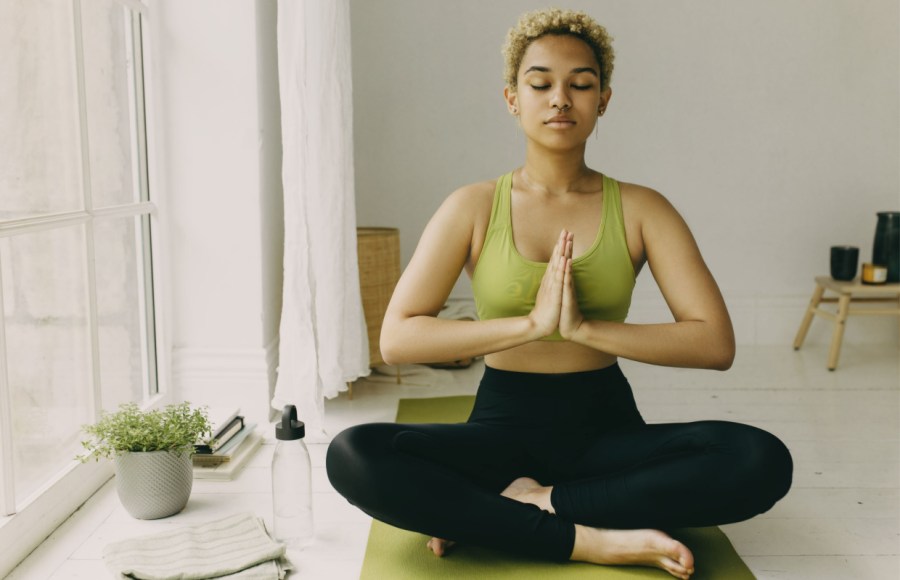Learning how to breathe correctly is the foundation of any yoga practice. Below, we’ve outlined the key yogic breathing techniques to help you synchronise your breath with your movements and develop a greater connection between your mind and body…
Chances are you don’t give a second thought to the way you breathe. But in yoga, the breath plays a key role, viewed as the link between your mind and body. Learning to breathe correctly, by using yogic breathing techniques, and to synchronise poses with your breath is an important way to deepen your practice and transform your health and wellbeing.
Related: What is yoga? Benefits & basics for beginners
Most of us tend to breathe shallowly, and when we’re anxious or stressed, we often hold our breath. Learning to improve and deepen your breath can not only calm and restore your mind, it helps nourish your body and revive your energy by elevating the oxygen levels in your blood.
Try the Sundried Non-Slip Jute Yoga Mat
BUY IT NOW:
£18.90 / amazon.co.uk
Related content:
- 10 minute yoga abs workout to tone your core
- Can you lose weight doing yoga?
- Full body yoga warm up: 7 best exercises & poses
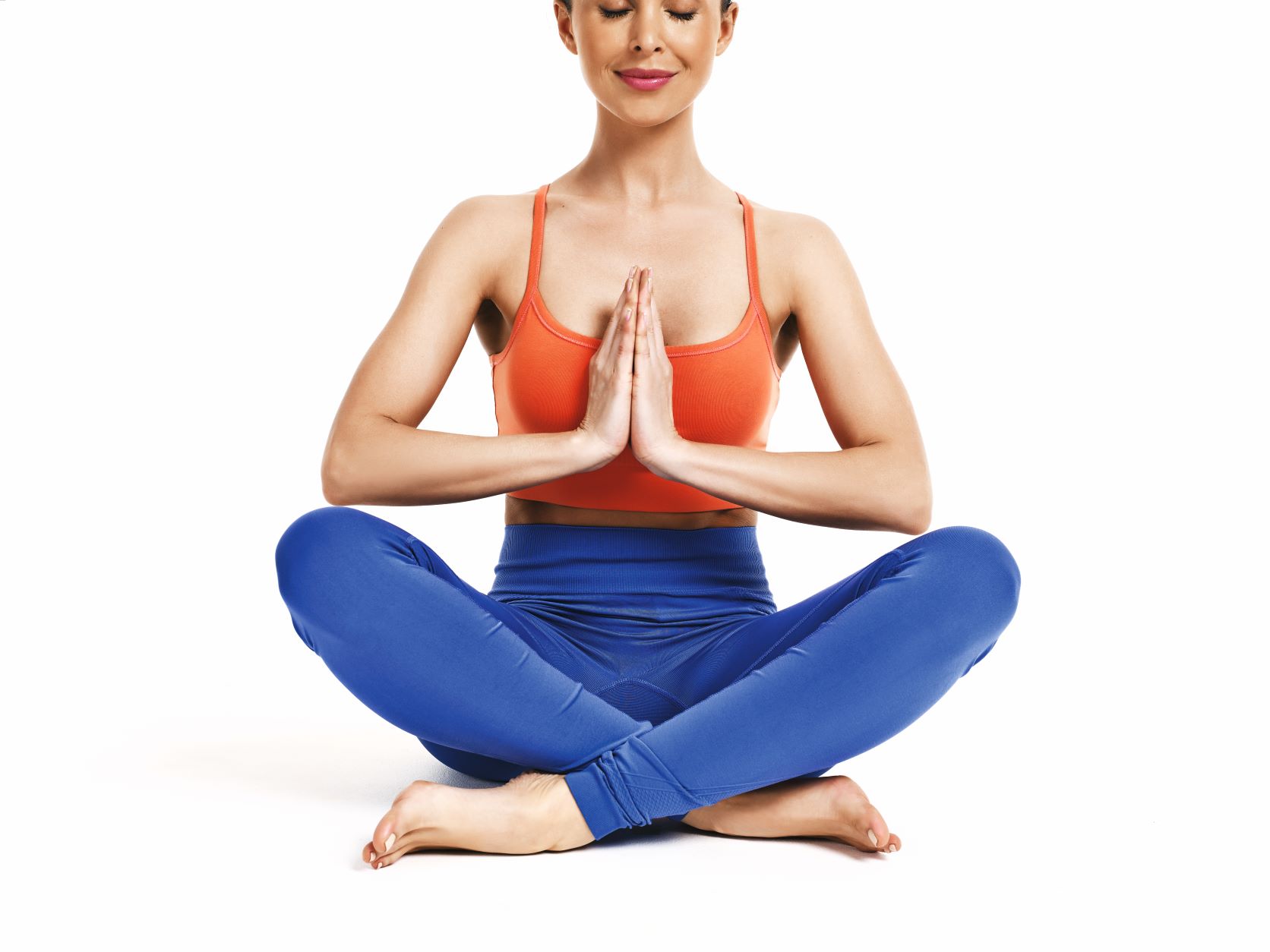
Yogic breathing techniques
The yogic technique of controlling the breath is known as pranayama. Its aim is to control and awaken the prana – or energy – that lies behind all movement. Pranayama consists of a set of yogic breathing exercises and techniques to teach you breath control. In the same way that yoga poses condition your body, pranayama exercises strengthen your nervous system as well as balance your mind and emotions, and restore and energise your body.
How to breathe in yoga:
There are three important breathing principles to observe when you’re practising yoga.
- Breathe in and out through your nose. This ensures warmer, cleaner air reaches your lungs and helps you control and slow your breathing. If you have a blocked nose or a cold, breathing through your mouth is all right, of course.
- Focus on your breath. If a posture feels difficult or strained, return your attention to your breath, focus on its rhythm and try to even out your inhalation and exhalation – both should be approximately the same length – while breathing deeply into your diaphragm.
- Co-ordinate your breath with movement. As a rule of thumb, inhale while opening, lengthening or extending your body, and exhale while deepening, releasing or folding into a posture. Don’t worry too much about getting this right. By focusing on your breath during your practice, it will eventually become second nature.
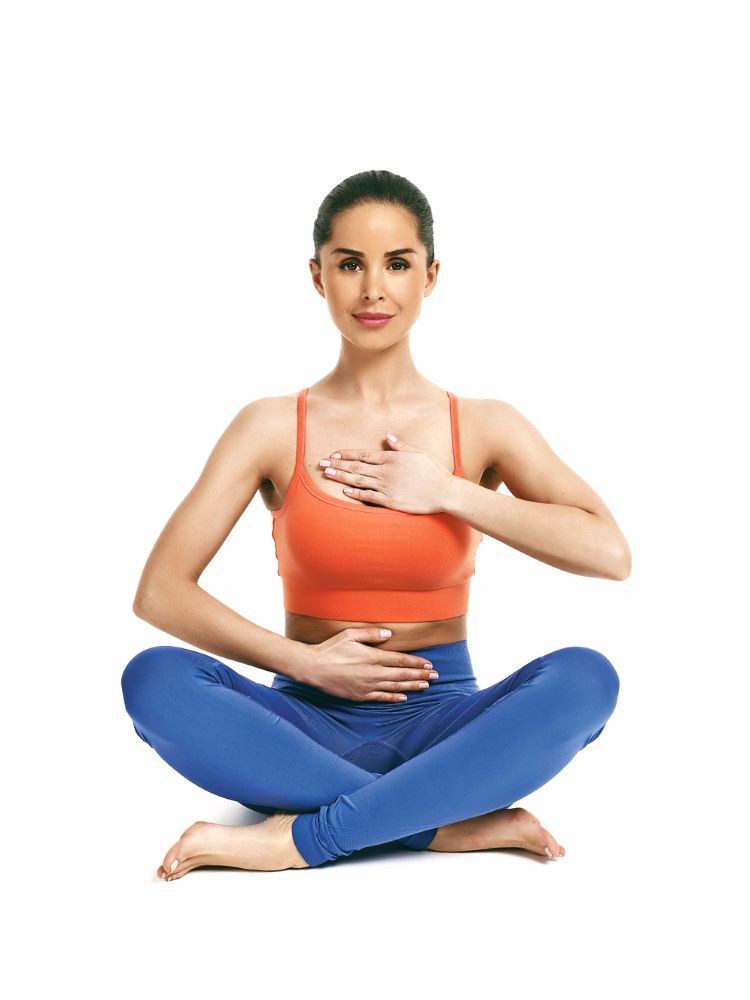
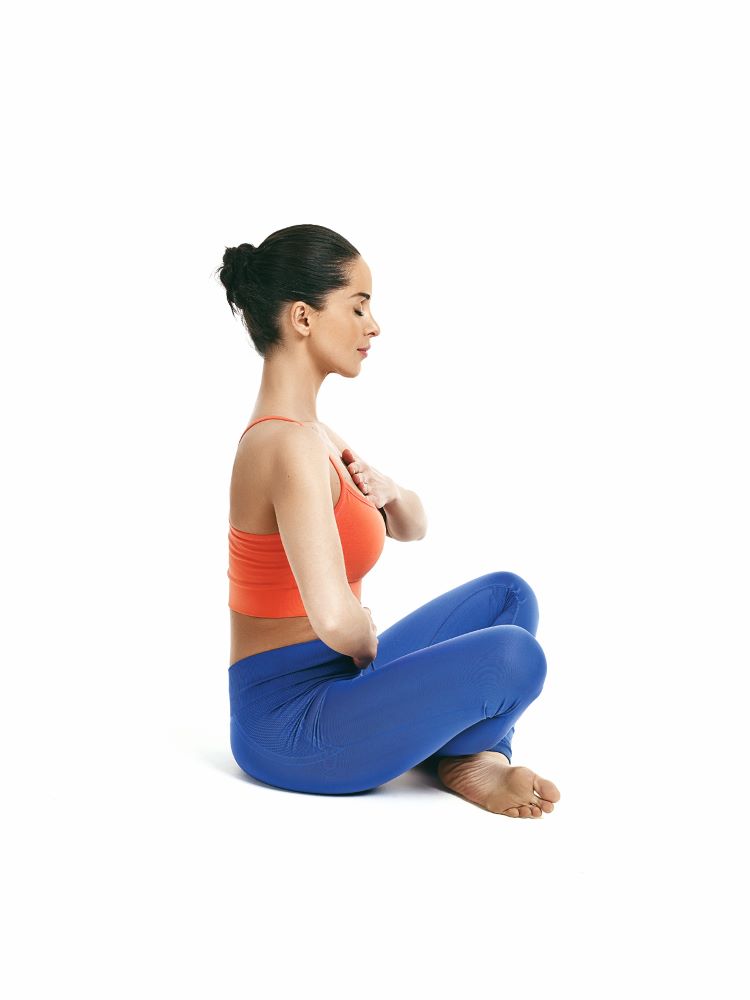
Yogic abdominal breathing technique
Use the following exercise at the beginning of your yoga sessions to help balance out your breath. Spend around five to 15 minutes on this yogic breathing technique.
- Lie down on your mat with your legs out in front of you or – especially if you have lower back pain – with your feet hip-width apart, knees bent and together. Or sit in a comfortable cross-legged position.
- If you are sitting, lay your hands in a comfortable position on your lap or knees, palms facing up. If you’re lying down on the floor, place your hands beside you, palms facing up or on your tummy, palms down.
- Make sure your spine is straight by stacking your shoulders above your hips and lengthening your spine by lifting the crown of your head. Contracting your core slightly will help you hold the pose.
- Close your eyes and feel the movement of your breath through your body. Observe your breath in this way until you notice it slows down and becomes more even.
- Observe how as you inhale, your diaphragm lifts, expands and broadens your ribcage and your belly fills with air, and how it lowers and your ribcage and abdomen contract as you exhale.
- Count the length of each in-breath and each out-breath. Notice the small pause after the in-breath and again, after the out-breath. Watch your breath gradually deepen.
Pranayama breathing exercises
These yogic breathing techniques are powerful practices, so begin with a short session and build them up as you become more familiar with them.
Victorious Breath (Ujjayi breath)
Benefit: Cleansing, calming and invigorating.
When to do it: Ujjayi breathing can be done while working on postures or practised before or after them (before relaxation) for an invigorating effect.
How to do the Victorious or Ujjayi breath in yoga:
- Sit cross-legged or lie down with support, such as a bolster, under your back. Broaden your chest and draw in your chin slightly.
- Exhale fully. Inhale through both nostrils and exhale through your mouth, silently making the sound ‘ha’. Continue in this way for about three breaths.
- Now close your mouth and continue silently making the sound ‘ha’ as you inhale and exhale. Feel the gentle constriction in the throat this produces and listen to the subtle ‘hissing’ sound.
- Continue breathing in this way, with your throat constricted but directing your breath deep into your lungs. Feel your chest open and your diaphragm expand sideways as you do so.
- Beginners should only do three to five minutes of this practice, and slowly build up to 10 to 15 minutes.
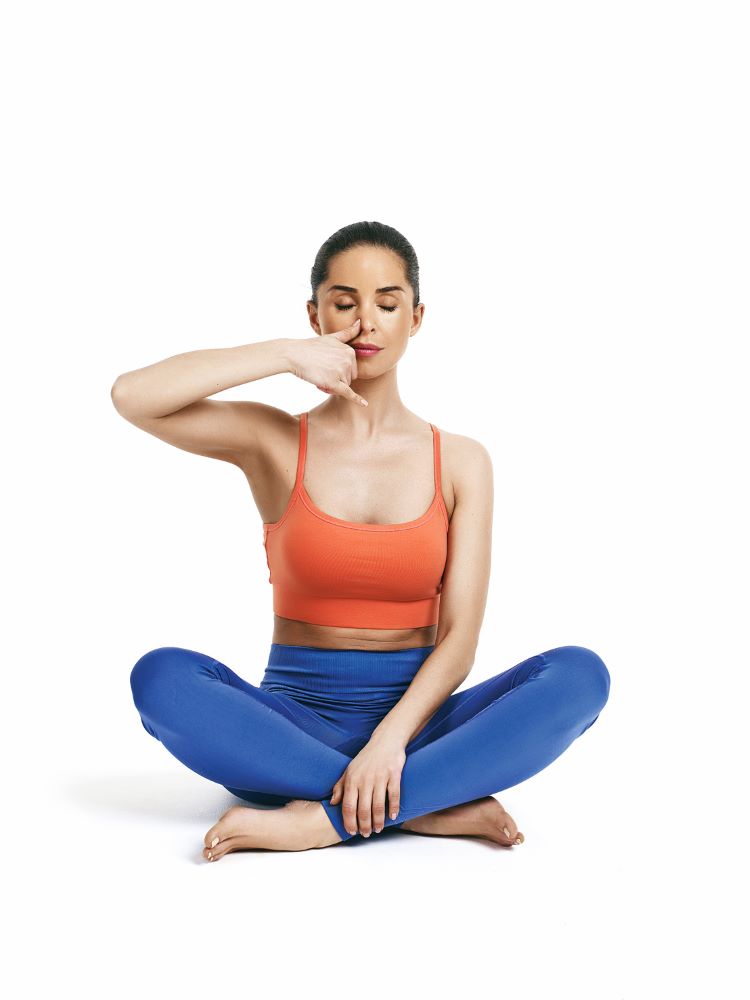
Alternate nostril breath (Na di Sodhana)
Benefit: Helps combat nerves, panic or confusion. Calms your brain and can also ease sinus congestion.
When to do it: Before an event that makes you feel nervous, before bed or anytime you need to feel centred.
How to do the alternate nostril breath (Na di Sodhana) in yoga:
- Sit in easy cross-legged or kneeling pose. Use the support of a cushion if that’s more comfortable.
- Rest your left hand on your left leg and fold the index and middle finger of your right hand inwards to your palm and wrap your thumb around them.
- Draw your chin slightly inwards so your head bows down slightly. Close your eyes. Bring your right hand up to your face and use your ring finger to close your left nostril. Exhale through your right nostril. Inhale through your right nostril.
- Close your right nostril with your right thumb and release your ring finger from your left nostril. Exhale through the your left nostril. Inhale through your left nostril. Close your left nostril and exhale through your right nostril. This is one cycle.
- Inhale again through your right nostril and continue for 10 to 30 cycles. Keep your spine long, shoulders relaxed and chest open.
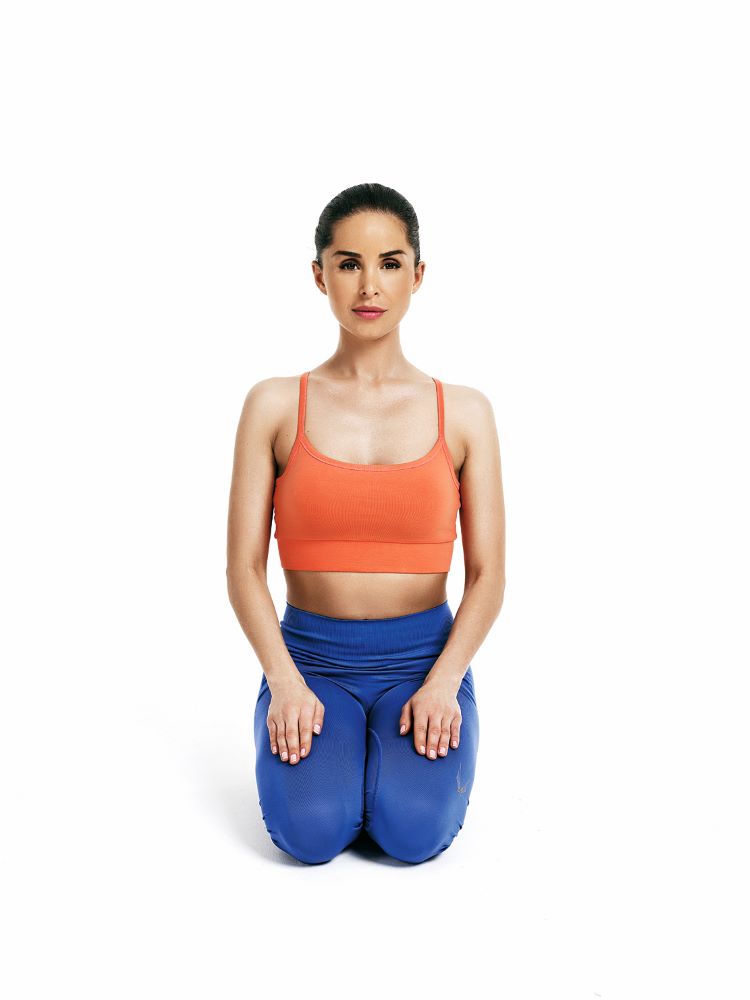
Bellows breath (Kapalabhati breathing)
Benefit: Yogis call this the ‘cleansing breath’. It energises your body in as little as one minute, and tones your tummy muscles too.
When to do it: Anytime you need a pick-me-up. It’s great in the morning. But avoid it when eating, during menstruation or if pregnant.
How to do the bellows breath (Kapalabhati breathing) in yoga:
- Sit in easy cross-legged or kneeling pose and focus on your breathing.
- Now, close your mouth and, on each exhalation through your nose, simply draw your abdomen inwards. Imagine your navel moving upwards and inwards as you exhale. Let the inhale happen naturally. Do this a few times and you’ll notice your abdomen moving in and out like a bellows.
- Now, speed up the exhalation so you’re taking one each second. You should be able to hear the exhalation but not the inhalation. This is correct. Do about 15 to 20 exhalations, rest then start another cycle. Beginners should start with 15 breaths a cycle, and experienced students can do up to 30.

